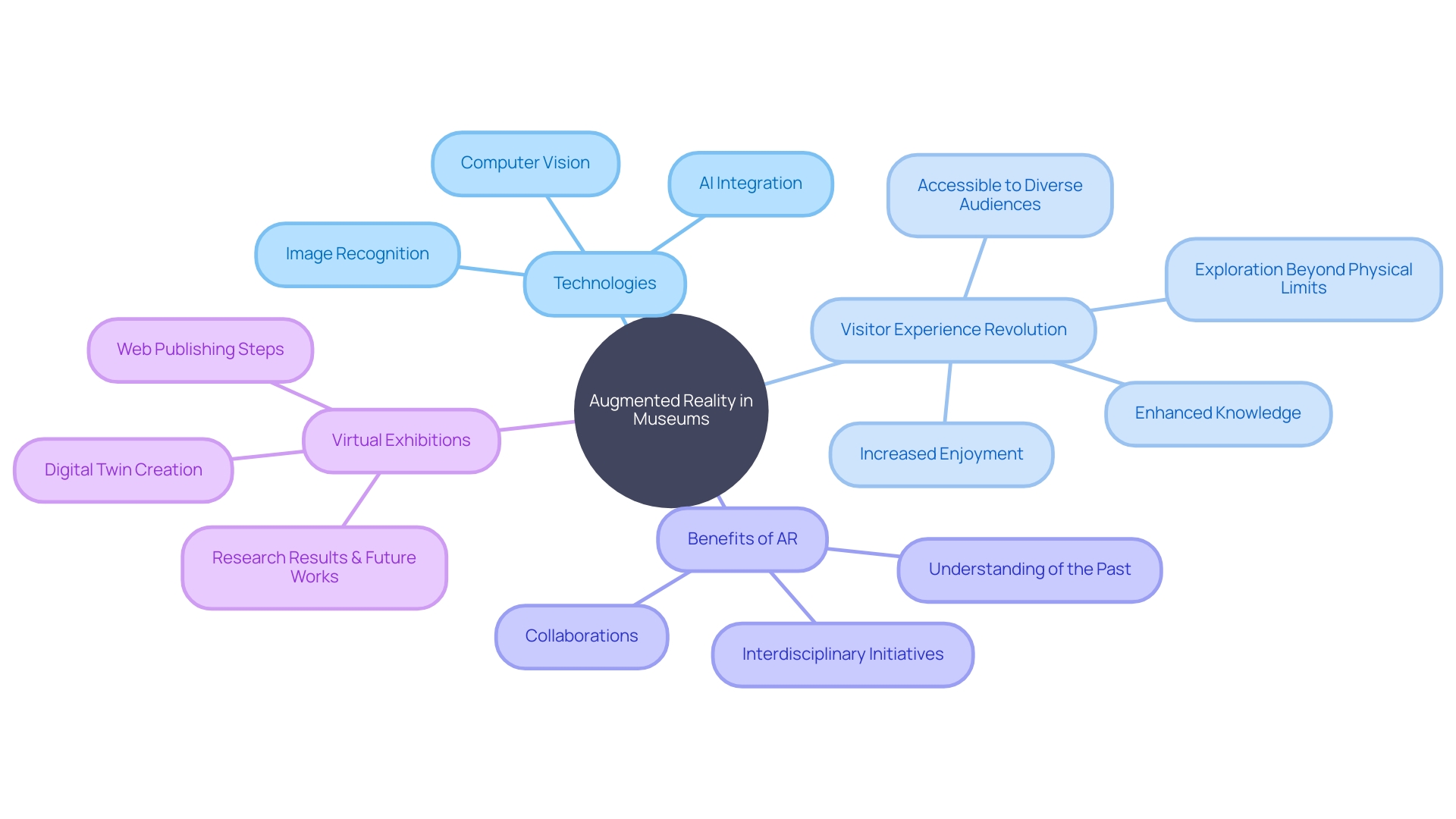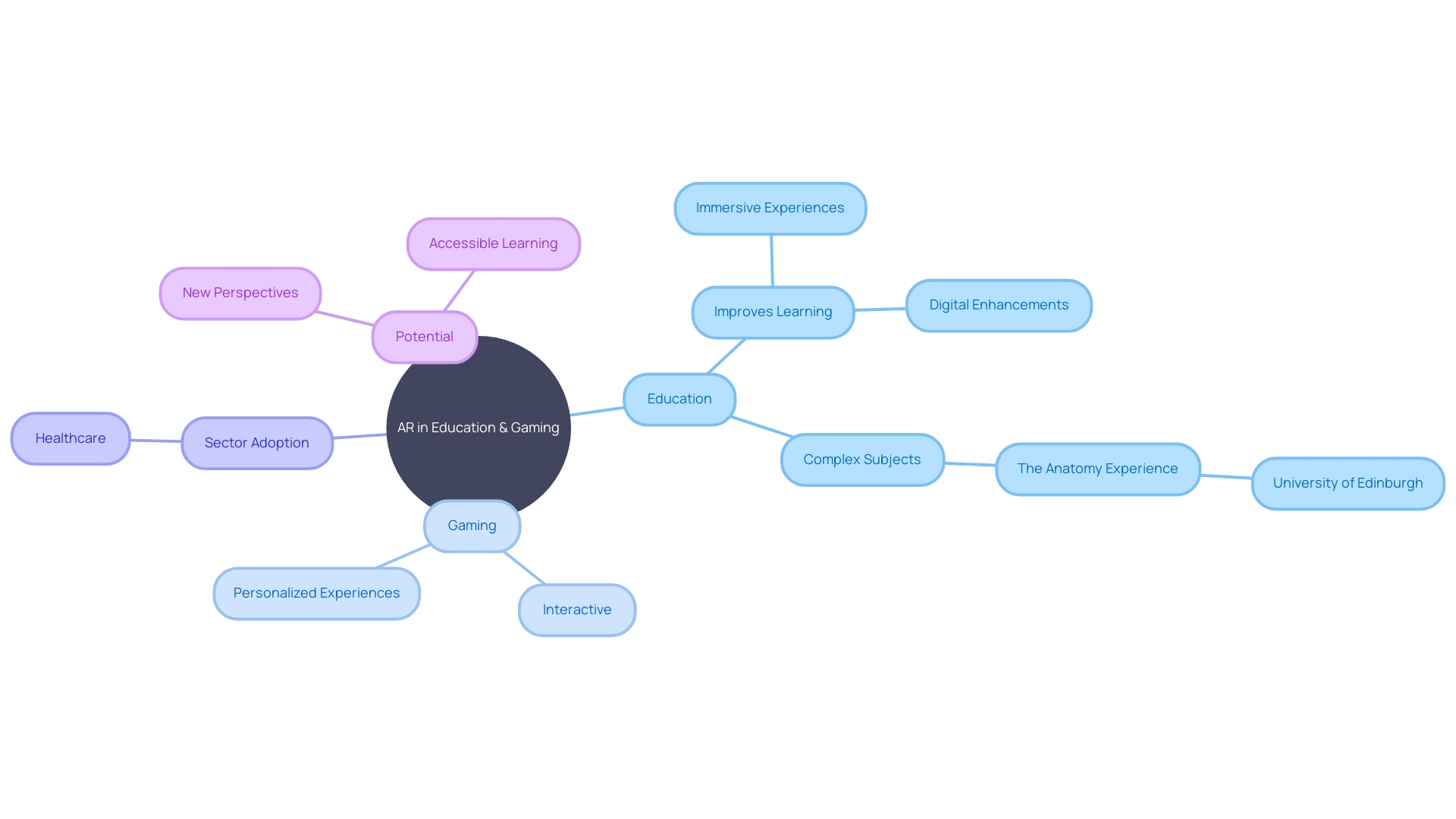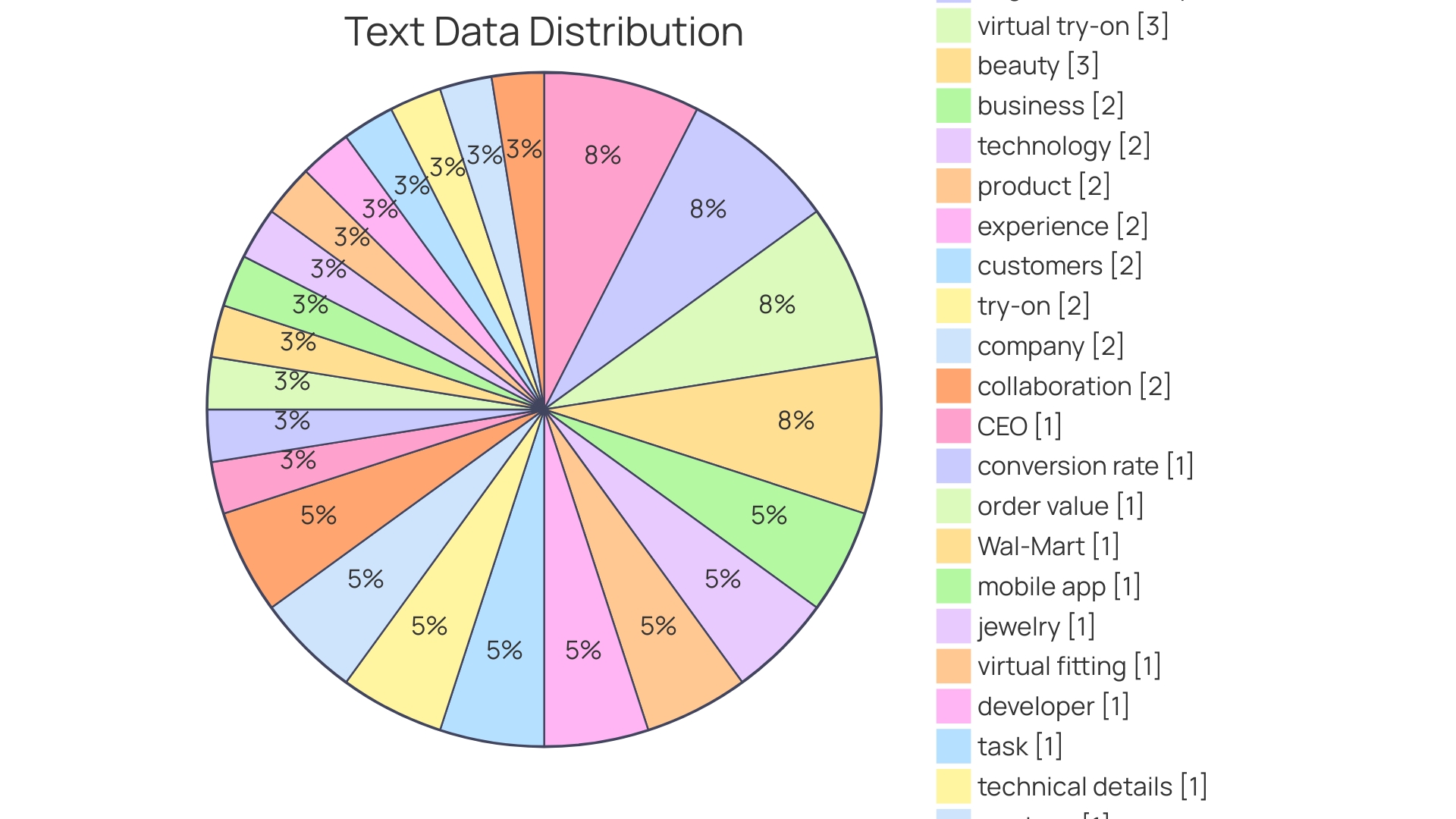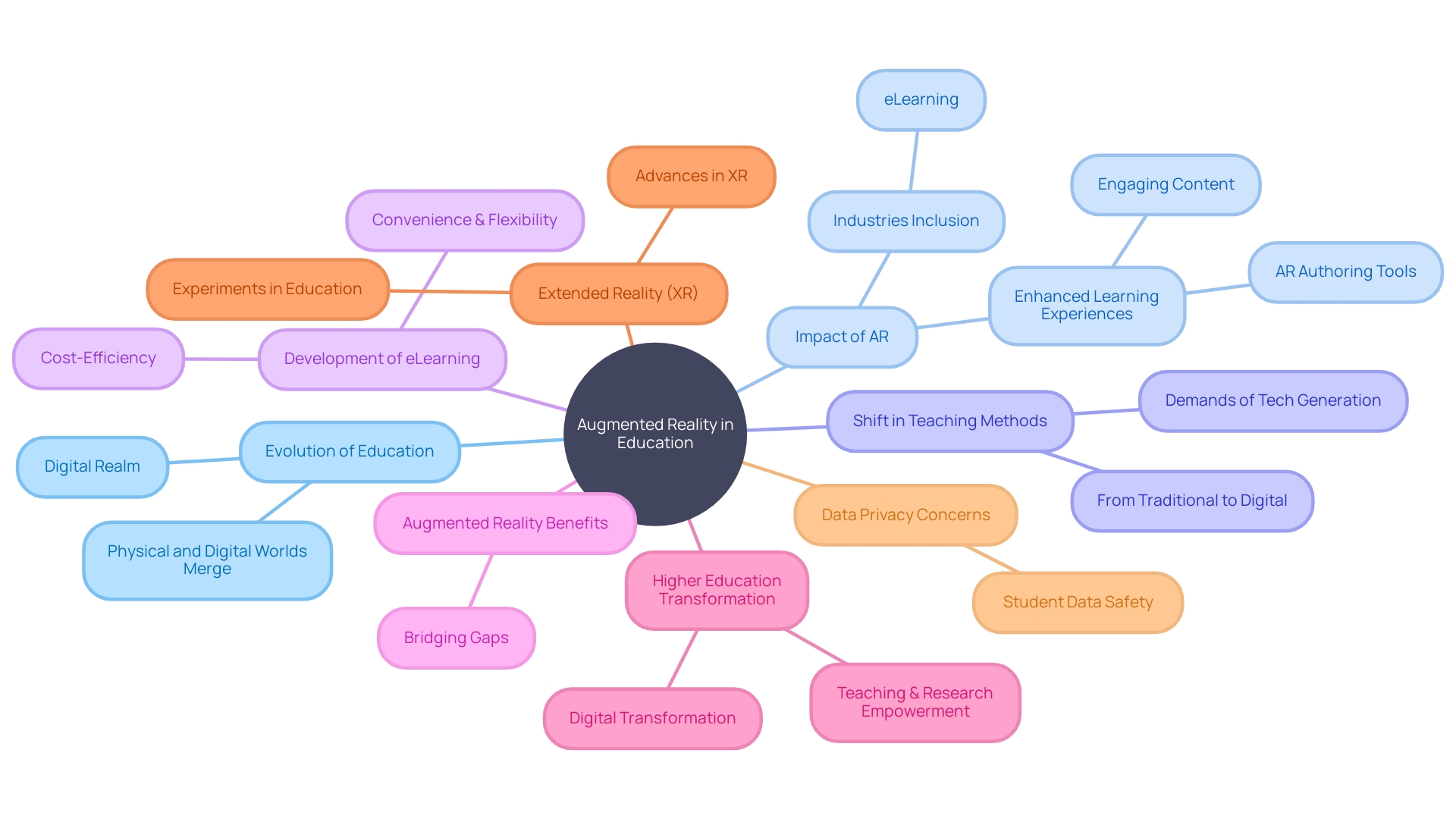Introduction
Augmented reality (AR) is transforming various industries and creating exciting possibilities for immersive experiences. From virtual museum tours to interactive art exhibitions, AR technology is reshaping the way we engage with art and culture. AR is also revolutionizing gaming and education by providing personalized and impactful experiences.
In the fashion industry, AR enables virtual try-on experiences, allowing consumers to visualize clothing and accessories before making a purchase. Additionally, AR is enhancing educational materials and fitness programs, making learning and physical activity more engaging and interactive. In the real estate sector, virtual property tours powered by AR enable potential buyers to explore and visualize homes from anywhere.
AR is even changing the way we travel, with AR-enhanced travel guides providing interactive and context-aware experiences. From training simulations to event experiences, AR is proving to be a powerful tool for professionals and event organizers alike. As AR continues to advance, it offers limitless possibilities for enhancing our daily lives and transforming the way we interact with the world around us.
AR Project Idea: Virtual Museum Tours
Augmented reality is revolutionizing the museum experience, transporting art and history aficionados into a meticulously crafted world where interactive and digital technologies meet cultural treasures. Consider the pioneering approach of Kunstmuseum Bern, which eschews traditional QR codes in favor of image recognition technologies like Roboflow, enabling visitors to delve deeper into their exhibitions. This seamless integration of AR facilitates a direct connection between the artwork and its context, augmenting visitors' knowledge and enjoyment.
Incorporating computer vision, institutions like the Museum of Jewish Heritage leverage AI to bring history to life, creating installations where visitors can virtually interact with Holocaust survivors, making it a profound educational tool. The shift toward digital extensibility using AR redefines accessibility, allowing exploration of every corner of the museum's collection, overcoming physical or geographical constraints.
Such advances in AR not only enhance the visitor's experience but also promise an inclusive and comprehensive exposure to the world's artistic and historical wealth, irrespective of one's physical capabilities or location. Coupled with current interdisciplinary initiatives—like the collaboration at the University of Rennes 1 where AR was used to reveal the hidden contents of ancient Egyptian mummies—AR is set to further broaden our understanding of the past. This AR project idea is more than just a virtual museum tour; it's an enduring doorway to the vast expanse of human culture and history that is now just a few taps away on your mobile device.

AR Project Idea: Interactive Art Exhibitions
Art exhibitions, traditionally static and contemplative, are evolving into dynamic and participatory spaces that inspire creativity and engagement through AR technology. Consider, for example, how interactive installations can transform by responding to visitors' movements. Imagine, as one sweeps their hand through the air, ancient statues come to life, narrating their history, or a painted landscape changes through the seasons with a touch.
These innovations in art are becoming a reality, as evidenced by the House of Digitization's visually compelling experience on one of Europe's largest LED Walls. Integrating local, regional, and global real-time data into a generative data visualization, the exhibition offers an engaging interplay of form, color, and information, where visitors directly influence the exhibit through interactive scenarios.
In another innovative approach, tablet computers transform views of a 3D printed city model into augmented experiences rich with animations and explanations. The augmentation reveals the impact of digital technology in various fields, like medicine and agriculture, showcasing the potential of AR in education.
Digital agency Curious Company's collaboration with Europa-Park offers an additional glimpse into the immersive potential of AR. By teleporting the story of Nikola Tesla and his energy experiments into users' living rooms, they blend historical storytelling with thrilling gameplay, highlighting AR's capacity to elevate a simple story into an immersive adventure.
As the immersive space matures, questions beyond the technological begin to surface. Artists like Ersin Han Ersin of Marshmallow Laser Feast point to the need for informed critique and strategies for digital preservation, ensuring that these groundbreaking experiences endure for future enthusiasts.
Interactive AR experiences are transforming viewers into participants and altering perceptions of art, technology, and interaction. These examples show a path forward, where the allure of the digital realm enhances our connection with art, history, and knowledge.
AR Project Idea: Augmented Reality Games
Augmented Reality (AR) is revolutionizing our gaming and educational landscapes by providing users with an immersive experience that integrates digital enhancements directly into their physical surroundings. A prime example of this innovation is the collaboration between AR developers and the Medical School of the University of Edinburgh, which led to the creation of 'The Anatomy Experience.' This AR learning tool was crafted with the explicit aim of helping medical students grasp the intricate geometries of human anatomy.
The application received overwhelming positive feedback for enriching the learning process, indicating that AR has tremendous potential to facilitate comprehension of complex subjects.
In gaming, AR offers a playground for creativity, where the once static mobile gaming experience leaps into the vibrant sphere of interaction with the environment. Users no longer view content; they become an active part of it—whether it's embarking on a treasure hunt or overseeing a virtual habitat. This technological advancement not only heightens engagement but also paves the way for personalized and impactful experiences in education and beyond.
The AR market is burgeoning, with powerhouse companies like Facebook, Intel, and Samsung investing heavily. Reflecting on the adoption of AR in various sectors, healthcare showcases compelling growth, with applications designed to enhance medical training, as demonstrated by The Anatomy Experience. As technology continues to advance, we can anticipate AR to transcend beyond entertainment, offering new perspectives in countless fields, turning complex realities into accessible and interactive learning opportunities.

AR Project Idea: Virtual Try-On for Fashion
Augmented reality is reshaping the fashion landscape, providing an innovative solution to one of online shopping's most persistent challenges - ensuring the right fit. Through AR, consumers can now experience the convenience of virtually trying on clothing and accessories. This extends far beyond mere visualization.
The technology delves into detailed personalization, simulating how different articles of clothing would look and contour to one's unique body shape. The practicality of pressing a 'try-on' button and instantaneously seeing oneself in new earrings or a trendy hat is not just a novel gimmick; it's revolutionizing the consumer experience and operational facets of retail businesses.
Success stories in the beauty industry already point to the effectiveness of AR try-on functionalities. Avon, for example, leveraged Perfect's AR technology and witnessed a dramatic conversion increase by 320 percent, coupled with a significant 33 percent rise in average order value among users engaging with the virtual try-on feature. This isn't an isolated success.
The growing expectations for detailed product visualization – catalyzed by global phenomena such as the pandemic and climate change tenets – are propelling the industry toward a reliance on AR for an immersive shopping experience that rivals the tactility of in-store purchases. Commitments by companies like PERFECT and its collaborations with major retailers indicate not only a current trend but the foundation for the next normal in retail.
Indeed, with the overall objective to minimize returns, which impact both economic and environmental sustainability, AR offers an intelligent solution. Statistics starkly outline the issue of online shopping's high return rates due to incorrect sizing. This problem is compounded by the varying standards in size charts and nuances in body shapes.
Virtual try-on technology is emerging as a key approach to address these disparities, aiming not only to provide a realistic visual representation but also to offer an accurate sense of garment fit. As the digital and physical worlds converge, AR's application in fashion signifies a leap towards a future of blending convenience, customizability, and environmentally sustainable practices.

AR Project Idea: Educational AR Apps for Students
Augmented Reality (AR) continues to redefine eLearning, by enabling educational materials to leap from the page into the three-dimensional space. The 'Anatomy Experience,' developed through a partnership with the University of Edinburgh’s Medical School, exemplifies how AR propels medical education. With AR, students can interact with the complex geometries of human anatomy, achieving an understanding traditionally confined to cadaver lab experiences.
This method has heralded a new dawn for educational methods, actively engaging students and facilitating comprehension of intricate subjects like the orientation and position of X-rays or the nuances of pelvic anatomy as seen in CT scans.
Recent meta-analyses confirm that educational AR apps significantly improve learning outcomes, especially in mathematics and reading among children aged 3 to 9. By integrating AR into homework and study routines, learners are granted immersive and interactive sessions that surpass traditional book-based education, thus catering to various learning styles and enhancing memory retention. As we embrace the digital era, educators are increasingly leveraging AR authoring tools to craft content that not only captivates but also educates, marking a shift from the static pages of textbooks to dynamic, engaging eLearning landscapes.

AR Project Idea: AR-Based Fitness and Wellness Programs
Augmented Reality (AR) is redefining fitness and wellness programs by transforming them into captivating experiences that merge the physical and virtual worlds. By incorporating virtual trainers and interactive gamified challenges, these programs are tailored to keep users engaged and motivated towards their fitness goals. Innovative projects like Supernatural Boxing not only equate to real-life vigorous activities such as bicycling and aerobic dancing but also adhere to health guidelines by encouraging 75 minutes of intense exercise per week—effectively meeting half the requirements of the recommended 150 minutes.
Jeffrey Morin, CEO and co-founder of Litesport, highlights the quick development and success of such AR fitness programs, noting the impactful collaboration with Snapdragon Spaces and ASENSEI to build an experience for a next-gen device. Furthermore, research underscores the significant benefits, as users engaging with these programs experience health parameters equivalent to those who partake in traditional physical activities.
This leap in fitness technology represents more than an advancement in entertainment; it's a pursuit to harness the allure of video games in fostering healthier habits. Current studies have observed players with frequent gaming habits, showing a trend towards poorer physical and mental health due to sedentary lifestyles and poor dietary choices. The immersive and interactive nature of AR, however, offers a potential shift in this dynamic, providing an appealing and convenient platform for enhancing personal motivation towards physical activity (PA).
A noteworthy 18-month study presented by Dr. Alexander Fanaroff pointed out the promise of AR in behavioral economics, showcasing that home-based interventions, gamified points, and monetary incentives can significantly boost physical activity levels, particularly among individuals at risk for cardiovascular disease. This integration of AR into fitness regimes indicates a future where exercise is not just a chore but an enjoyable and integral part of daily life, blending fun and wellness in a seamless dance of technology and health.
AR Project Idea: Virtual Real Estate Property Tours
Augmented reality transforms the real estate industry by creating virtual property tours. These tours are not your average slideshow; they are an intricate blend of vivid stills, complete 360-degree imagery, and dynamic videos. As though you are physically present, you can navigate each space within a property, scrutinize details up close or from afar, whirl around, ascend and descend the staircase, or even gaze out the windows to apprehend the views awaiting future residents.
Envision being able to examine a home, thousands of miles away, without stepping outside your door; it's an innovation as exceptional as our modern world. Augmented reality isn't just an impressive tech gadget; it's becoming vital to real estate. This tech facet offers a competitive edge, permitting homebuyers to immerse themselves completely and envisage their life within the space, down to arranging their own furnishings in each room.
The variety in available virtual tour types grants options suitable for every budget and skill set. From the simplicity of a video walkthrough recorded on a smartphone to the depth captured by a state-of-the-art 360-degree camera, these tours cater to every prospective buyer's preferences and accessibility.
In light of recent news, the progression of technology such as Apple's forthcoming budget-friendly AR headset, and Meta's strategic movements towards a more immersive product ecosystem, demonstrates the tech sphere's unyielding innovation. Experts suggest leveraging virtual reality technology, acknowledging it can exponentially broaden a realtor's reach and operational efficiency. Now is an opportune moment to harness the capabilities of AR, exploring a realm where the physical and virtual worlds converge to revolutionize how we visualize and interact with real estate.
AR Project Idea: AR-Enhanced Travel Guides
Augmented Reality (AR) is transforming the travel industry, offering a dynamic and immersive way for tourists to interact with their surroundings. Imagine wandering through the streets of Rome, your phone highlights architectural marvels, whispers the secrets of ancient ruins, and navigates local delicacies with a mere glance. Equipped with AR-enhanced travel guides, the lines between time and space blur, enabling travelers to viscerally experience destinations enriched with layered, interactive content.
Last year's case study of InterRail travelers demonstrated the hunger for curated, technology-augmented experiences, particularly in deciphering the intricacies of traveling across diverse European terrains. Meanwhile, significant investments from titans like Facebook Corporation and Alphabet, Inc. underscore the exponential growth of AR technologies. The AR market now promises thrilling advancements for those eager to bridge the gap between virtual information and the wonders of the real world.
Indeed, as Artillery Intelligence's analysis suggests, AR is not merely a novelty but a catalyst for boosting business visibility and customer engagement, fulfilling the latent demand for rich, context-aware explorations.
Moreover, new AI-powered features in Google Maps reflect this trend by delivering visually driven search results that tap into billions of community-shared images, helping wanderers discover places with unparalleled specificity and excitement. It's a brave new world for travelers and the AR market, a symbiotic dance between discovery and technology that is reinventing what it means to travel.
AR Project Idea: AR-Based Training and Simulation
Augmented Reality (AR) is proving to be a boon for professionals across various disciplines by providing immersive and interactive training without the risks associated with real-world situations. Within the healthcare sector, AR is being utilized for medical training where practitioners can practice complex procedures in a controlled, virtual environment, thereby enhancing professional development and increasing safety. In the aviation industry, flight simulations through AR are revolutionizing the way pilots are trained, offering a cost-effective alternative to traditional flight training.
The industrial sector is also benefiting from this technology, as exemplified by the AR-driven advancements at AstraZeneca's Macclesfield facility. There, over 800 employees engage in complex tasks within a highly regulated and sanitized setup, with AR tools streamlining their training process which significantly reduces the extensive 27-week training period previously required. Likewise, Tipteh, an industrial automation specialist, has adopted AR for engineering processes, helping designers by providing complete 3D insights, resulting in time and cost savings while maintaining high standards.
The transformative power of AR is not limited to just practical fields but extends into the realm of education and learning. Educational Digital Platforms (EDPs) are harnessing AR to create captivating content that resonates with a tech-savvy generation, enhancing eLearning by making it more interactive, accessible, and flexible. This shift towards digital learning, underpinned by AR technology, is resulting in more efficient use of resources, facilitating content distribution, and aligning with the needs of students and educators alike.
The potential of AR as an educational tool is further underscored by industry experts. For instance, Nvidia's Gautham Sholingar emphasizes the impact of simulation in training, particularly how it enables the experience of rare but critical scenarios that are otherwise difficult to replicate in the real world, such as those involving autonomous vehicles and drones.
The benefits are echoed in the statistics reflecting the emerging trends in eLearning; not only do these platforms promote continuous interaction with educational content, but they also facilitate various evaluation methods, support collaboration, and provide immediate feedback, all of which contribute to an enhanced learning experience. As the educational landscape continues to evolve, the integration of AR into training and simulation stands out as a vital component in the development of a skilled, adaptable, and knowledgeable workforce.
AR Project Idea: AR-Integrated Event Experiences
Augmented reality (AR) has shown to unfold innovative avenues for live events that command audience attention and participation. In an era where virtual and physical realms are merging, AR applications in events present endless creative potential. Take the Lincoln Center's initiative, The Dream Machine Experience, conceptualized by Nona Hendryx—an eclectic blend of Afrofuturist art, story, and music, all enhanced with AR and VR technology.
The audiences embark on a narrative-powered journey, using technology as a portal into culturally rich and interactive worlds.
Moreover, revitalizing public events with AR solutions, as evinced by the technologically enriched Lord Mayor's Show, reveals how cultural festivities can evolve. It's a prime example that demonstrates the favorable outlook for future AR integrations in events.
This visionary approach to event experience is underscored by the sentiments of industry experts like Greg Madison, who emphasizes 'the fleeting instant when users forget they are interacting with technology,' highlighting the desire to immerse the audience in astonishment and delight. Meanwhile, Curtis Hickman speaks on the synergy of digital and physical convergence, creating what he calls 'magic moments.'
While the Red Bull Air Race illustrates the challenges of traditional events in terms of logistics and environmental impact, it also suggests the potential of AR in streamlining event experiences. The goal is not only to engage but also to cut back on the extravagance of physical setups.
Events like conferences and trade shows, pivotal for professional growth and networking, can also benefit from AR by enhancing interactivity and facilitating knowledge exchange. As the world of events continues to navigate the intersection of innovation and tradition, it is clear that AR is set to redefine our collective experience, opening doors to a future where the augmented is the norm.
Conclusion
In conclusion, augmented reality (AR) is revolutionizing industries and reshaping our daily lives. AR enhances museum tours, art exhibitions, gaming, education, fashion, real estate, travel, and professional events. It provides immersive and personalized experiences that enhance learning, engagement, and interaction.
AR technology is transforming the way we engage with art and culture by offering immersive and educational experiences. In the fashion industry, AR enables virtual try-on experiences, improving the consumer experience and operational efficiency.
AR is also revolutionizing education by creating interactive and immersive learning experiences. It enhances fitness and wellness programs by merging the physical and virtual worlds, promoting healthy habits.
In the real estate sector, AR provides virtual property tours, transforming the industry and enhancing visualization and interaction. Furthermore, AR is transforming the travel industry, offering dynamic and immersive experiences for tourists.
AR is a powerful tool for professionals and event organizers. It enhances training and simulations, providing immersive experiences.
As AR continues to advance, it offers limitless possibilities for enhancing our daily lives. Embracing AR technology opens up a world of opportunities for immersive experiences that enhance learning, engagement, and interaction. AR is reshaping industries and providing exciting possibilities for immersive experiences.
Experience the future with augmented reality solutions from BestToolbars.





